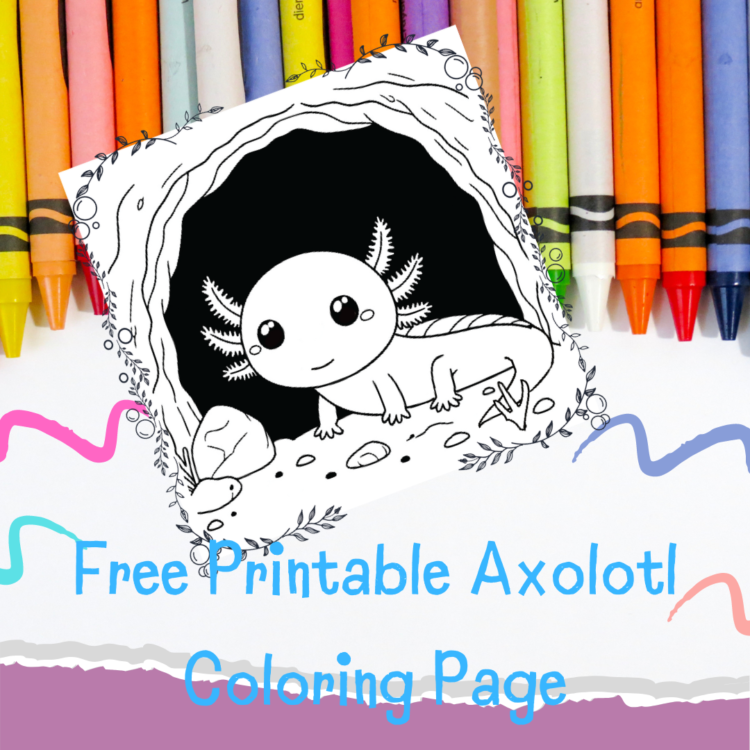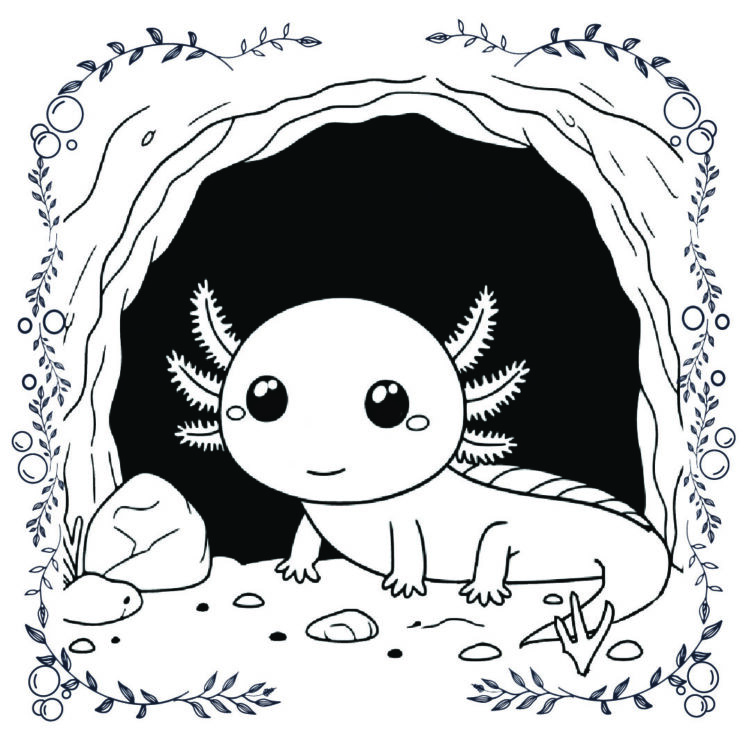
In the newest adventures at littlecrunchy.com the minions are exploring the wonderful secret little world of axolotls. So of course I had to make a coloring page for them! And of course I wanted to share this free axolotl coloring page with all of you.
In this blog post, we’re delighted to offer you a free axolotl coloring page. It’s sure delight your child’s love of these amazing little creatures. Before you grab your crayons, let’s dive into the enchanting world of axolotls with some fascinating facts. These axolotl facts are some of the ones my kids have specially loved learning about. Be sure to also search the blog for other free printables your children might love. I think free learning printables, specially for homeschoolers, is one of the wonderful things about blogs.
Fascinating Axolotl Facts:
- Ancient Amphibians: Axolotls are fascinating amphibians native to the ancient waterways of Mexico, particularly the Xochimilco canals and Lake Chalco. They have been a part of Mexican culture and mythology for centuries.
- Regenerative Abilities: One of the most remarkable traits of axolotls is their incredible regenerative abilities. They have the remarkable capacity to regenerate lost limbs, organs, and even parts of their brain. This unique ability has made them a subject of scientific research and fascination. Their resilience is part of what has inspired my family as we continue to recover from trauma these few years.
- Neoteny: Axolotls exhibit a phenomenon known as neoteny, which means they retain their juvenile features throughout their entire lives. Unlike other amphibians, axolotls do not undergo metamorphosis and remain in their larval form, retaining their gills and aquatic lifestyle.
- Habitat and Conservation: Unfortunately, axolotls are critically endangered in the wild due to habitat destruction, pollution. Introduction of invasive species is also harming them. Efforts are underway to conserve and protect their remaining habitats, including conservation breeding programs and restoration projects.
- Aquatic Lifestyle: Axolotls are fully aquatic creatures and are perfectly adapted to their watery habitats. They have long, slender bodies with feathery gills that help them extract oxygen from the water. Their paddle-like tails propel them gracefully through their aquatic environment.
- Variety of Colors: Axolotls come in a stunning array of colors, including shades of pink, white, black, and gold. These beautiful creatures have captivated people around the world with their striking appearances and unique personalities.
- Diet and Feeding: Axolotls are carnivorous and primarily feed on small prey such as worms, insects, and small fish. They are skilled hunters, using their keen senses and quick reflexes to capture their food.
- Behavior and Social Interaction: Despite their solitary nature in the wild, axolotls can be kept in captivity in groups. (this is controversial) In groups they may exhibit social behaviors such as mating rituals and territorial displays. They are generally peaceful creatures but may become aggressive towards each other if overcrowded or stressed. Most american keepers of axolotls recommend keeping them alone. But many other axolotl keepers around around the world seem to commonly keep them in groups we are finding.
- Reproduction: Axolotls reproduce through external fertilization, with females laying hundreds of eggs in aquatic vegetation. The eggs are fertilized by males, and the resulting larvae hatch after about two weeks. Axolotls reach sexual maturity at around 18 months of age. Given the small genetic population of axolotls it is highly irresponsible to breed them without knowing their lineage. Inbreeding has created fatal offspring and further weakened the species. If you are researching axolotls as a pet please check to make sure the breeder or store has their lineage. Even if you do not intend to breed lineage is important in supporting reputable breeders so this species isn’t further harmed by man. I know, a dark way to end these facts but this one is vital. If we love these animals, we need to do a better job of taking care of them in the wild and in captivity. Soon they may only be found in captivity. We owe it to them to do our best.

Just right click on the free axolotl coloring page and save it to your machine to print. It is supposed to be square, I know that is a bit odd for a coloring page but it leaves room for students to journal if they like when printed in portrait mode. What would you name this one?
Need help printing this free coloring page? Message me!
As you embark on your coloring adventure with our free axolotl coloring page, take a moment to appreciate the wonder and beauty of these extraordinary creatures. From their regenerative abilities to their vibrant colors, axolotls are truly a marvel of nature. Let your creativity flow as you bring these fascinating amphibians to life on paper!
Free axolotl coloring pages and more.
If you love this page please consider saying hello in the comments and when there are new free coloring pages I can reply to you so you do not miss them!
References:
- National Geographic – Axolotl Facts
- Smithsonian’s National Zoo & Conservation Biology Institute – Axolotl Conservation
- Scientific American – The Amazing Axolotl
- The Axolotl Colony – Axolotl Information

